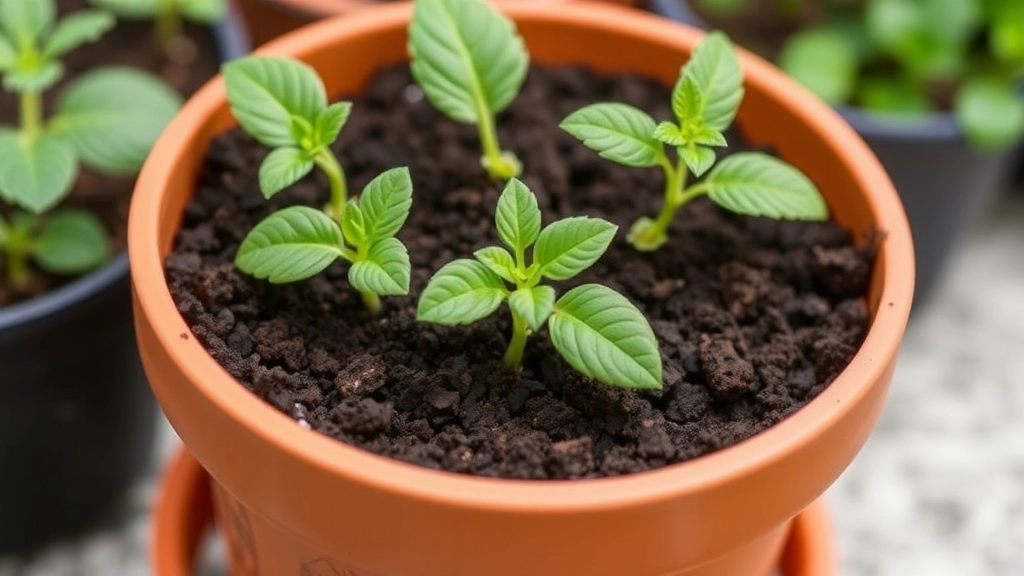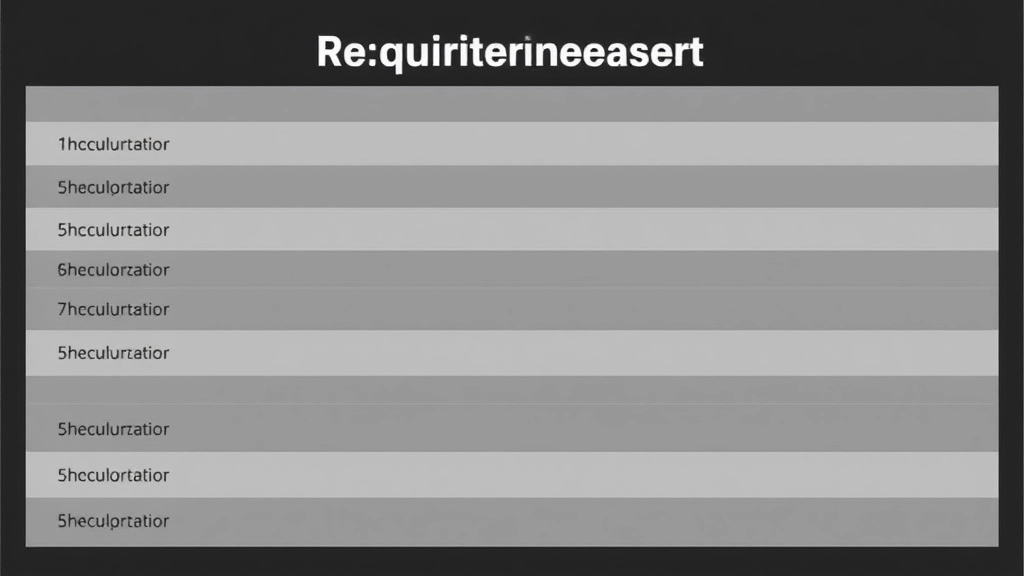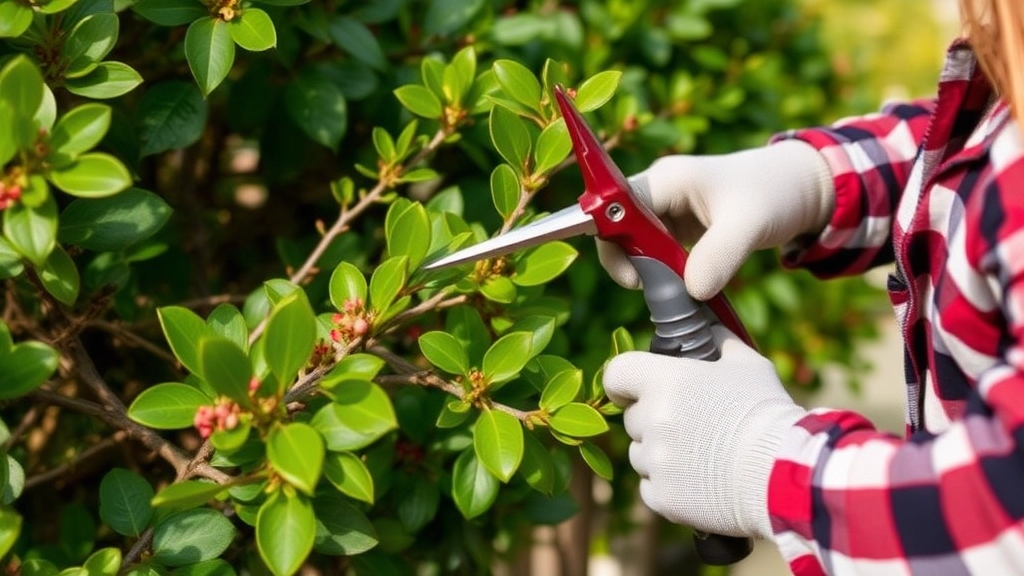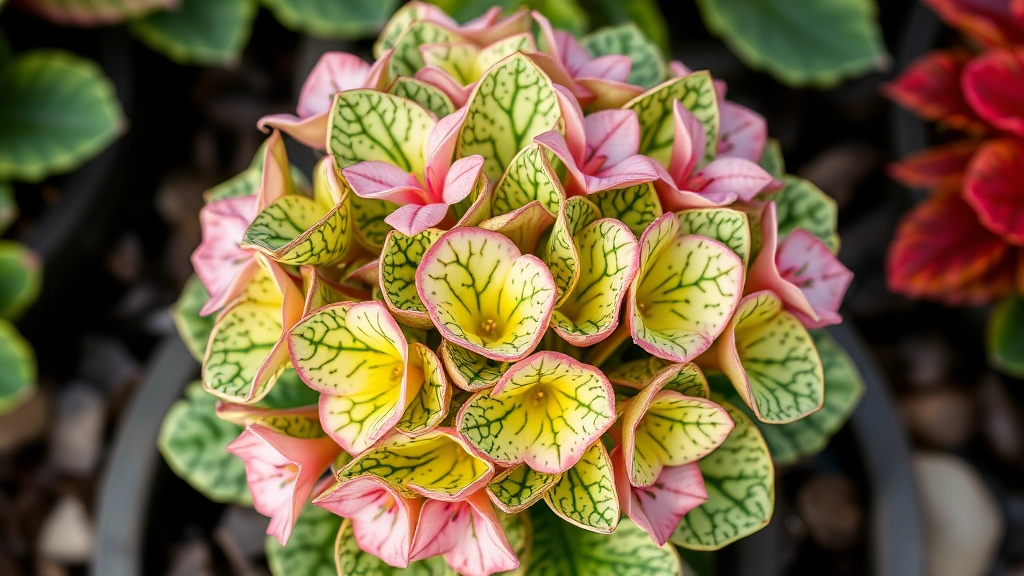Welcome to the Wild World of Kalanchoe Beharensis Variegated
Welcome to the wild world of Kalanchoe beharensis variegated, a plant that’s as unique as it is stunning. If you’re looking for a houseplant that’s out of this world, you’ve just hit the jackpot. This succulent on steroids boasts elephant-ear-sized leaves with splashes of color that’ll make you think Mother Nature went a bit crazy with her paintbrush.
In this article, we’ll dive into everything you need to know about this Madagascar marvel. From its jaw-dropping features to its care requirements, we’ve got you covered. Whether you’re a seasoned plant parent or a curious newbie, get ready to fall in love with the Kalanchoe beharensis variegated. Trust me, this plant’s not just a pretty face – it’s a conversation starter that’ll have your mates asking, “What on earth is that?”
Overview of Kalanchoe Beharensis Variegated
Ever stumbled upon a plant that looks like it’s from another planet?
Meet the Kalanchoe Beharensis Variegated, mate.
This bad boy’s not your average houseplant.
It’s a succulent on steroids, with leaves that could double as elephant ears.
But here’s the kicker – it’s variegated.
That means it’s got these wicked splashes of colour that make it look like nature went wild with a paintbrush.
Originally from Madagascar, this beast can grow up to 3 meters tall in the wild.
But don’t worry, it’ll behave indoors if you treat it right.
It’s part of the Crassulaceae family, which is just a fancy way of saying it’s related to jade plants and echeverias.
The variegated version is like the cooler, edgier cousin of the regular Kalanchoe Beharensis.
It’s got the same velvety, silver-green leaves, but with streaks of cream or yellow that make it pop.
This plant’s not just a pretty face though.
It’s tough as nails and can handle a bit of neglect.
Perfect for those of us who sometimes forget we even have plants, right?
So, if you’re after a statement piece that’ll have your mates asking “What the heck is that?”, the Kalanchoe Beharensis Variegated might just be your new best friend.
Unique Features of Variegated Kalanchoe Beharensis
Let’s dive into what makes the variegated Kalanchoe beharensis a real head-turner. Trust me, this plant’s got some tricks up its sleeve that’ll make you do a double-take.
First off, those leaves are something else. We’re talking massive, velvety triangles that look like they’ve been dusted with silver. But here’s the kicker – the variegated version takes it up a notch with splashes of cream or yellow. It’s like nature decided to go Jackson Pollock on these bad boys.
Now, you might be wondering, “What’s the big deal about variegation?” Well, let me tell you:
- It’s rare: Not every Kalanchoe beharensis variegata gets the variegated treatment. It’s like winning the plant lottery.
- It’s unpredictable: Each leaf has its own unique pattern. No two are exactly alike.
- It’s eye-catching: These plants are guaranteed conversation starters. Your mates will be asking, “Where’d you get that?”
But it’s not just about looks. The variegated Kalanchoe beharensis is a tough cookie too. It’s drought-tolerant and can take a bit of neglect. Perfect for those of us who sometimes forget we even have plants, right?
Here’s a quick rundown of what makes this plant stand out:
- Size: Can grow up to 6 feet tall. That’s taller than most of us!
- Texture: Fuzzy leaves that feel like velvet. You’ll want to pet it (but maybe don’t).
- Colour: Silver-green base with cream or yellow variegation. It’s like a living painting.
- Shape: Triangular leaves that can reach up to 1 foot long. They’re not messing about.
But here’s the real kicker – these plants are slow growers. That might sound like a downside, but think about it. You get to enjoy each stage of growth, watching as new variegated leaves unfurl. It’s like a slow-motion nature documentary right in your living room.
So, if you’re after a plant that’s a bit different, a bit tough, and a whole lot of interesting, the variegated Kalanchoe beharensis care might just be your new best mate. Just don’t expect it to grow overnight – good things come to those who wait, after all.
Ideal Growing Conditions
Let’s chat about the perfect setup for your Variegated Kalanchoe Beharensis.
These succulents are tough cookies, but they’ve got their preferences.
First up, temperature. They’re not fans of the cold, so keep ’em cozy.
Aim for temps between 60-75°F (15-24°C). That’s their sweet spot.
Humidity? They’re not fussy. Average room humidity works just fine.
But here’s the kicker: drainage is key.
These guys hate wet feet. Seriously, it’s their pet peeve.
So, what’s the ideal setup?
- Well-draining soil (more on that later)
- A pot with drainage holes (non-negotiable)
- A spot with bright, indirect light
- Protection from cold drafts
Think desert-like conditions, but with a bit more TLC.
Remember, these plants are survivors. They can handle a bit of neglect.
But give them the right conditions, and they’ll thrive like nobody’s business.
It’s all about finding that balance between tough love and pampering.
Get these basics right, and your Variegated Kalanchoe Beharensis will be living its best life.
Soil and Potting Requirements

Let’s talk dirt, folks. When it comes to our variegated Kalanchoe beharensis variegata, getting the soil right is like nailing the foundation of a skyscraper. It’s crucial.
Here’s the deal:
- Well-draining soil is your best friend
- Think cactus mix with a twist
- Add some perlite or pumice for extra drainage
Why? Because these succulents hate wet feet. Trust me, I learned this the hard way.
Potting Pro Tips:
- Choose a pot with drainage holes. No exceptions.
- Go for terracotta or unglazed ceramic pots. They’re breathable.
- Size matters – pick a pot just slightly larger than the root ball.
Now, here’s a game-changer I stumbled upon: mix in some coarse sand. It’s like giving your Kalanchoe beharensis a first-class ticket to Drainageville.
But wait, there’s more:
- pH level: Aim for slightly acidic to neutral (6.0-7.0)
- Organic matter: A bit of compost won’t hurt
- Avoid heavy soils like the plague
Remember, these plants are tough cookies in their natural habitat. They’re used to rocky, nutrient-poor soils. So, don’t go overboard with the fancy stuff.
Quick story: I once potted mine in regular potting soil. Big mistake. It sulked for weeks until I switched to a grittier mix. Lesson learned.
Bottom line: Your variegated Kalanchoe beharensis needs soil that drains faster than a leaky bucket. Get this right, and you’re halfway to Kalanchoe beharensis care success.
Watering and Humidity Needs
Let’s talk about keeping your Kalanchoe Beharensis Variegated happy and hydrated.
These succulents are pretty chill when it comes to water.
They’re like that friend who’s always up for a drink but doesn’t need one to have a good time.
Here’s the deal:
- Water thoroughly, but only when the soil’s dry to the touch
- In summer, this might be once a week
- In winter, you can stretch it to once every 2-3 weeks
Overwatering? That’s a big no-no. These guys hate wet feet.
Humidity-wise, they’re not fussy. Average room humidity is fine.
But if you live somewhere super dry, a light misting now and then won’t hurt.
Remember, it’s easier to save an underwatered Kalanchoe than an overwatered one.
When in doubt, hold off on the H2O.
Your Kalanchoe Beharensis Variegated will thank you for keeping things on the drier side.
Light Requirements

Let’s chat about the light needs of our funky friend, the Variegated Kalanchoe Beharensis. Trust me, getting this right can make or break your plant’s success.
Bright but Indirect Light: The Sweet Spot
These plants are sun-lovers, but they’re not beach bums. They crave bright light, but direct sunlight can be a bit much for them. Think of it like this:
- Imagine you’re at a party. You want to be where the action is, but not right under the spotlight, yeah?
- That’s your Variegated Kalanchoe. It wants to be near the window, but not pressed against it.
I’ve found that an east-facing window is often the jackpot. It gives that morning sun without the harsh afternoon rays.
Adapting to Your Space
Now, I know not everyone’s got the perfect setup. Here’s how to work with what you’ve got:
- Too much light: If your only spot is a south-facing window, throw up a sheer curtain. It’s like sunglasses for your plant.
- Not enough light: Got a darker corner? No worries. These guys can tolerate lower light, but they might get a bit leggy. Consider a grow light to give ’em a boost.
Signs Your Plant’s Light Isn’t Right
Your Kalanchoe will tell you if it’s unhappy. Here’s what to watch for:
- Pale leaves or fading variegation: “Hey, I need more light!”
- Scorched or brown patches: “Ouch, too much sun!”
- Stretching or leaning towards light: “Can you move me closer to the window?”
Seasonal Shifts
Remember, the sun’s position changes with the seasons. In winter, you might need to move your plant closer to the light source. In summer, it might need a bit more protection.
Bottom line: Variegated Kalanchoe Beharensis thrives in bright, indirect light. Get this right, and you’re well on your way to a happy, healthy plant. Keep an eye on those leaves, and don’t be afraid to move your plant around until you find its happy place. If you’re interested in other varieties, you might want to check out the Kalanchoe Beharensis for comparison.
Fertilization Guidelines
Alright, let’s talk about feeding your Variegated Kalanchoe Beharensis.
These succulents aren’t big eaters, but they do appreciate a snack now and then.
Here’s the deal:
- During the growing season (spring and summer), feed your plant every 4-6 weeks.
- Use a balanced, water-soluble fertilizer diluted to half strength.
- Always water the plant before fertilizing to avoid root burn.
But here’s a pro tip:
Less is more when it comes to fertilizing these beauties.
Overfertilizing can lead to leggy growth and weak stems.
If you’re unsure, it’s better to underfeed than overfeed.
Now, during winter:
- Hold off on the fertilizer completely.
- Your Kalanchoe is taking a nap and doesn’t need the extra nutrients.
Remember:
Variegated plants often grow slower than their non-variegated cousins.
So don’t stress if your plant isn’t growing as fast as you’d like.
It’s just doing its thing at its own pace.
Bottom line:
Fertilize sparingly, and your Variegated Kalanchoe Beharensis will thank you with healthy growth and those stunning leaves we all love.
Common Pests and Diseases

Alright, let’s chat about the baddies that might try to crash your Kalanchoe Beharensis Variegated party. Trust me, I’ve been there, and it’s not fun when these uninvited guests show up.
Pests That Love Your Plant (Almost) As Much As You Do
- Mealybugs: These little cotton-ball lookalikes are a real pain. They suck the life out of your plant and leave a sticky mess behind.
- Spider Mites: Tiny but terrible. They’ll make your plant look like it’s got a bad case of the flu.
- Scale Insects: These guys are like tiny armoured tanks, latching onto your plant and refusing to budge.
Diseases That Might Crash The Party
- Root Rot: This is what happens when you love your plant a bit too much with the watering can. It’s like drowning your plant in kindness.
- Powdery Mildew: Looks like someone dusted your plant with flour. Not a good look, trust me.
How To Keep Your Plant Safe
- Regular Check-ups: Give your plant a once-over every week. It’s like a mini health check.
- Good Air Flow: Plants love a bit of a breeze. It keeps the nasties away.
- Clean Tools: Don’t be spreading diseases around. Clean your pruning shears, folks!
- Right Amount of Water: Too much is just as bad as too little. Find that sweet spot.
- Quarantine New Plants: New plant? Great! Now keep it away from the others for a bit, just in case.
Remember, prevention is better than cure. Keep an eye out, and you’ll catch any issues before they become big problems. Your Kalanchoe Beharensis care routine should include regular inspections to ensure your plant stays healthy and thriving!
Propagation Methods
Alright, let’s chat about how to make more of these funky Variegated Kalanchoe Beharensis plants.
It’s not rocket science, but there are a few tricks to it.
Here’s the deal:
1. Leaf cuttings:
- Snip a healthy leaf
- Let it dry for a day or two
- Stick it in some well-draining soil
- Keep it moist, not soggy
2. Stem cuttings:
- Cut a 4-6 inch stem
- Remove lower leaves
- Let it callous over for a few days
- Plant in a mix of perlite and cactus soil
3. Offsets:
- Look for baby plants at the base
- Gently separate them from the mother plant
- Pot them up in their own containers
Pro tip: Spring and summer are your best bet for propagation.
Remember, patience is key. These guys aren’t speed demons when it comes to growing.
Keep an eye on humidity – too much can lead to rot.
Bright, indirect light is your friend here.
Don’t forget to give them a bit of space to grow. They’ll thank you for it.
And there you have it – your guide to making more of these quirky plants.
Pruning and Maintenance Tips

Alright, let’s chat about keeping your Kalanchoe beharensis variegated looking sharp. Trust me, I’ve learned a thing or two about pruning these beauties, and I’m here to spill the tea.
First things first: why bother pruning? Well, it’s not just about making your plant look pretty (though that’s a nice bonus). Pruning helps:
- Promote bushier growth
- Remove dead or damaged leaves
- Control the plant’s size
- Improve air circulation
Now, let’s break it down into some easy-to-follow steps:
1. Timing is everything
Spring or early summer is your best bet for pruning. The plant’s in its active growing phase, so it’ll bounce back quicker.
2. Tools of the trade
Grab some clean, sharp pruning shears. We’re not savages here – no ripping leaves off with your bare hands!
3. The chop
Cut just above a leaf node (that’s where new leaves sprout from). Aim for a 45-degree angle to prevent water from pooling on the cut surface.
4. Less is more
Don’t go overboard. Remove no more than 1/3 of the plant at a time. We’re giving it a trim, not a buzzcut!
5. Dead or alive?
Snip off any dead, yellowing, or damaged leaves whenever you spot them. Your Kalanchoe will thank you for it.
Maintenance tips:
- Dust those leaves! A gentle wipe with a damp cloth keeps them looking fresh and helps with photosynthesis.
- Rotate your plant regularly for even growth. Nobody likes a lopsided Kalanchoe.
- Keep an eye out for pests. Early detection is key.
Remember, pruning isn’t just about looks. It’s about keeping your Kalanchoe beharensis healthy and thriving. So don’t be shy – get in there and give it a trim!
Seasonal Care Instructions
Hey there, plant pals! Let’s chat about keeping your Kalanchoe beharensis variegated happy all year round.
Spring: Wakey-wakey time!
- Gradually increase watering as your plant wakes up
- Start feeding with a balanced fertiliser
- Perfect time for repotting if needed
Summer: Livin’ it up!
- Water more frequently, but don’t go overboard
- Keep an eye out for pests – they love the warm weather too
- Provide some shade during scorching afternoons
Autumn: Winding down
- Reduce watering as growth slows
- Stop fertilising
- Bring indoor plants away from cold windows
Winter: Chill time
- Water sparingly – only when the soil’s bone dry
- No fertiliser needed – your plant’s having a kip
- Keep it cosy – away from drafts and radiators
Remember, these Kalanchoes are tough cookies, but they’re not big fans of the cold.
If you’re in a chilly spot, bring ’em inside when temps drop below 10°C (50°F).
Seasonal care for Kalanchoe beharensis variegated isn’t rocket science. Just think about what you’d want in each season – not too hot, not too cold, just right!
Display and Landscaping Ideas
Let’s chat about making your Kalanchoe beharensis variegated shine, shall we? This plant’s a real showstopper, and I’ve got some killer ideas to make it the star of your space.
Indoor Stunners:
- Plop it in a sleek, modern pot on a side table – instant eye-candy.
- Group it with other succulents for a mini desert vibe.
- Use it as a living sculpture in a minimalist room.
Outdoor Wonders:
- Rock gardens? This plant’s your new best mate.
- Mixed succulent beds? It’ll be the talk of the town.
- Container gardens on patios or balconies? Absolutely.
Pro Tips:
- Contrast is key. The silvery-green leaves pop against dark backgrounds.
- Height matters. Use it to add levels to your plant displays.
- Think texture. Its fuzzy leaves play well with smooth-leaved plants.
Remember, this isn’t just any old plant. It’s a conversation starter, a mood lifter, and a space transformer all rolled into one. Whether you’re jazzing up your living room or giving your garden a facelift, the Kalanchoe beharensis variegated is your secret weapon.
So, where are you gonna put yours? In a fancy pot by the window? Or maybe as the centrepiece of your outdoor succulent collection? The possibilities are endless with this beauty. Just make sure it’s got enough light, and it’ll keep turning heads for years to come.
Frequently Asked Questions about Kalanchoe Beharensis Variegated
How often should I water my Kalanchoe Beharensis Variegated?
Water your plant thoroughly when the soil is completely dry to the touch. This usually means once a week in summer and every 2-3 weeks in winter. Remember, it’s better to underwater than overwater these succulents.
Can I grow Kalanchoe Beharensis Variegated outdoors?
Yes, you can grow it outdoors in USDA zones 9-11. However, it needs protection from frost and direct afternoon sun. If you live in a colder climate, it’s best to grow it as a houseplant or bring it indoors during winter.
Why are the leaves on my Kalanchoe Beharensis Variegated turning brown?
Brown leaves can be a sign of sunburn, overwatering, or cold damage. Check your plant’s location and watering habits. Ensure it’s getting bright, indirect light and that the soil isn’t waterlogged.
How big will my Kalanchoe Beharensis Variegated grow?
In ideal conditions, it can grow up to 3 meters (10 feet) tall in the wild. However, as a houseplant, it typically stays much smaller, usually around 1-1.5 meters (3-5 feet) tall.
Is Kalanchoe Beharensis Variegated toxic to pets?
Yes, like many Kalanchoe species, it can be toxic if ingested by pets. Keep it out of reach of cats, dogs, and other curious pets.
How do I propagate my Kalanchoe Beharensis Variegated?
You can propagate it through leaf cuttings, stem cuttings, or offsets. Allow cuttings to callous over for a few days before planting in well-draining soil.
Why is my Kalanchoe Beharensis Variegated losing its variegation?
Loss of variegation is often due to insufficient light. Move your plant to a brighter location, but avoid direct sunlight which can scorch the leaves.
How often should I repot my Kalanchoe Beharensis Variegated?
Repot every 2-3 years or when the plant outgrows its current pot. Use a pot just slightly larger than the current one with excellent drainage.

